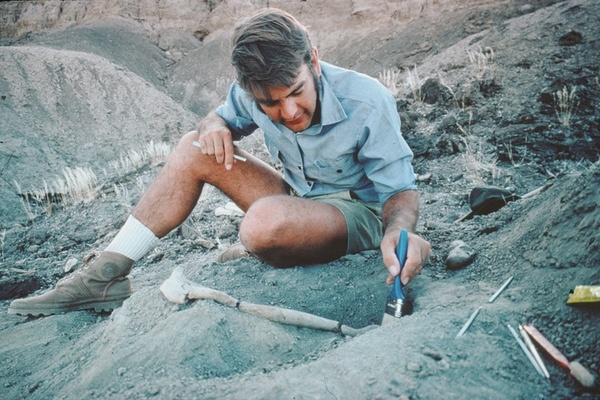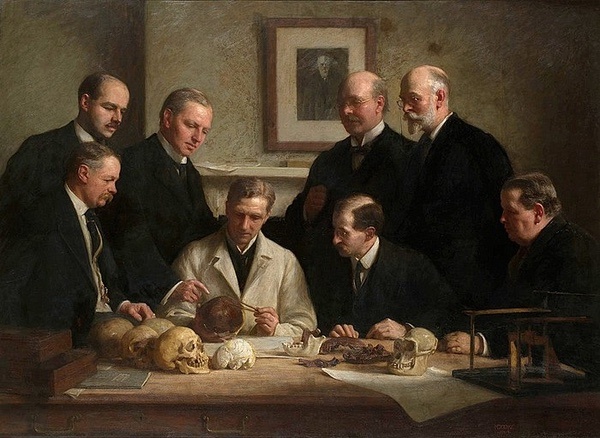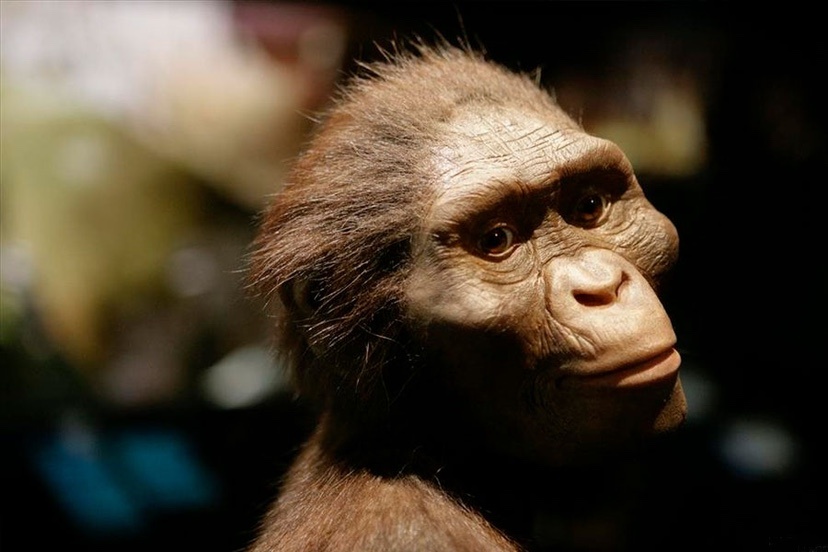This is a photo of Lucy, celebrating her 50th anniversary.
Or rather, it’s Lucy, as she was imagined by a sculptor working for a museum. Probably the National Museum in Addis Ababa, Ethiopia, near where Lucy was partly discovered.
“Partly discovered” in the sense that only certain parts of her were discovered.
And not even the most important parts, in my opinion. But we’ll get into that topic later.
Along with other topics, including the psychoactive drug LSD, the Bible, scientists with incredibly active imaginations, fraud, and the pseudo-science known as “evolution”.
The story could start in the Danakil Depression in Ethiopia, in 1974. Paleoanthropologist Donald Johanson had assembled a crew of laborers — folks handy with picks and shovels and toothbrushes — to look for evidence of the “missing link” between chimpanzees and modern humans. For reasons unknown to the rest of us, Dr. Johanson thought he might find the fossil evidence in Ethiopia, of all places.
He looked over his shoulder one day, and saw a fossil poking up out of the dry, desert soil. Just waiting for him. This turned out to be one of Lucy’s fossilized bones, although she had not yet been named “Lucy”.
Here’s photo of Dr. Johanson… posing for a photograph the following year, looking as if he has just found another incredible fossil.

But the story could also start in 1912, when an amateur archaeologist named Charles Dawson claimed that he had discovered the “missing link” between early apes and man.
In February 1912, Dawson contacted Arthur Smith Woodward, a geologist at the Natural History Museum in London, stating he had found a section of a human-like skull in Pleistocene gravel beds near Piltdown, East Sussex. That summer, Dawson and Woodward discovered more bones and artifacts at the site, which they connected to the same individual. These finds included a jawbone, more skull fragments, a set of teeth, and primitive tools.
The so-called Piltdown Man.
The society of British scientists were incredibly excited by the find — particularly, I suppose, because the “missing link” had actually been found in England rather than in some faraway valley in, say, Ethiopia.
Of course, the skeptics weighed in, as they usually do. But it seemed obvious to the British scientific community that, here were actual fossils of the “missing link”… for all to see.
Especially, for scientists to see.

Here’s a group portrait of the Piltdown skull being examined by some of the most brilliant scientists in England. Back row (from left): F. O. Barlow, G. Elliot Smith, Charles Dawson, Arthur Smith Woodward. Front row: A. S. Underwood, Arthur Keith, W. P. Pycraft, and Ray Lankester. The portrait on the wall is of Charles Darwin. Painting by John Cooke, 1915.
The picture of Charles Darwin, hanging on the wall above these eminent scientists, helps explain how amateur archaeologist Dawson had so easily fooled the scientific community.
After studying birds on the Galápagos Islands and kangaroo rats in Australia, Darwin — who was trained as a geologist — wrote a book with a lengthy title: On the Origin of Species by Means of Natural Selection, or the Preservation of Favoured Races in the Struggle for Life. Based on this book, which was a best seller in its day, scientists and the general public began to accept the belief that humans were descended from apes, through the process of “natural selection”.
And the race was on, to find fossils that proved Darwin’s theory. So we could say, with some confidence, that the story of Lucy started with Charles Darwin. As did the story of the Piltdown Man.
Unfortunately for everyone, but especially for the British scientists, the Piltdown Man turned out to be a fraud. The pieces of skull were from an actual human, and the jaw bone — which had been “adjusted” to match the skull — was from an orangutan. The “fossil teeth” were also from an orangutan. The “fossils” had been treated with iron oxide and chromium to look old.
But the fraud was not fully revealed until 1953. The discovery of fraud could have made F. O. Barlow, G. Elliot Smith, Charles Dawson, Arthur Smith Woodward, A. S. Underwood, Arthur Keith, W. P. Pycraft, and Ray Lankester look pretty darn foolish. But they were all dead by then.
But we could also say the story begins with the Bible, where humans appear on Page One, shortly after the whales and the cattle.
So God created man in His own image, in the image of God He created him; male and female He created them.
As things turned out, the males and females thus created were not terribly obedient, except for the part about being fruitful and multiplying. In fact, God was so disappointed in how they behaved that he caused a worldwide flood — much worst than Hurricane Helene — and only a handful for humans survived. When the ordeal was over, the survivors built an alter and offered burnt offerings, as anyone who has survived a worldwide flood is pretty much expected to do. The offering reportedly involved a few of the animals they had rescued in the Ark.
And the the LORD smelled the sweet savour; and the LORD said in His heart, I will not again curse the ground any more for man’s sake; for the imagination of man’s heart is evil from his youth; neither will I again smite any more every thing living, as I have done.
So one topic we want to consider is the imagination of man’s heart.
Especially, where it concerns Lucy.
Underrated writer Louis Cannon grew up in the vast American West, although his ex-wife, given the slightest opportunity, will deny that he ever grew up at all. You can read more stories on his Substack account.

